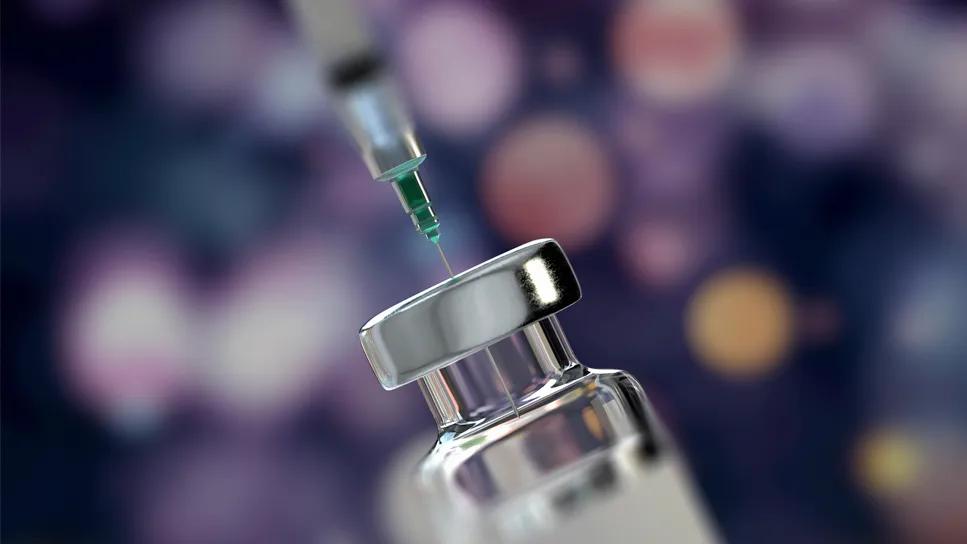On-demand stem cell mobilizer is an effective salvage strategy

Using the hematopoietic progenitor cell (HPC) mobilization agent plerixafor is an effective choice for patients with AL amyloidosis who are at risk of mobilizing poorly prior to hematopoietic cell transplant (HCT), according to a recent study.
Advertisement
Cleveland Clinic is a non-profit academic medical center. Advertising on our site helps support our mission. We do not endorse non-Cleveland Clinic products or services. Policy
Though plerixafor has been FDA approved since 2008 for mobilization in patients with non-Hodgkin lymphoma and multiple myeloma, it is not currently indicated for patients with AL amyloidosis. In a recent study, researchers retrospectively assessed on-demand use of the medication along with granulocyte-colony stimulating factor (G-CSF) to mobilize cells in patients with AL amyloidosis who were at risk of insufficient collection with G-CSF alone.
“As a salvage strategy, it was effective for collecting an adequate number of cells, and was not associated with an increase in toxicity, hospitalization or mortality,” says Anne Hubben, MD, lead study author and a hematology oncology fellow at Cleveland Clinic. “The transplant outcomes were similar.”
Certain populations, including those who are 65 or older, have been exposed to multiple lines of therapy, have a greater percentage of plasma cells in their bone marrow, have a low platelet count or experience chronic cytopenias, may be at risk for poor HPC reserve, leading to low mobilization or low collection prior to HCT. In those cases, administering G-CSF may not be enough to collect an adequate number of cells. This can result in the patient needing a second round of cell collection, which has an increased morbidity risk as well as an associated cost. The researchers sought to understand whether adding plerixafor on-demand would improve cell mobilization yield for these patients.
Since many patients with AL amyloidosis are medically fragile, it was important to study whether plerixafor could be well tolerated. “Previously there haven’t been clinical trials that considered the use of plerixafor for patients with AL amyloidosis,” says Jack Khouri, MD, study senior author and a hematologist/oncologist with Cleveland Clinic’s Taussig Cancer Institute. “Most of the data available about this agent’s use for mobilization of hematopoietic progenitor cells in amyloidosis is based on small case series and institutional experiences. That’s why having studies like this are so important for rare disorders like AL amyloidosis to help guide our decisions.”
Advertisement
Between March 2008 and April 2018, 50 patients with AL amyloidosis underwent HCT at Cleveland Clinic. They received G-CSF (10 mcg/kg/day) for four days prior to stem cell collection. If the initial peripheral blood (PB) CD34 + HPC count measured prior to leukapheresis was less than or equal to 20 cells/uL, patients were given plerixafor (0.24 mg/kg/day) in addition to G-CSF until a minimum of 2 x 10(6) CD24+ cells/kg or a target of 5 x 10(6) Cd34+ cells/kg was collected.
If the initial PB CD34+ HPC count was greater than 20 cells/uL, patients continued mobilization with G-CSF alone. In total, 22 patients mobilized with G-CSF alone and 17 received G-CSF plus plerixafor.
The researchers found that on-demand use of plerixafor in patients at risk of mobilization failure was a safe and effective strategy, enabling patients to move forward with transplant. Time to neutrophil engraftment did not differ, and there were no differences seen in length of hospitalization or in infectious complications. “Patients tolerated the medication well, and there were no safety signals,” says Dr. Khouri.
After a median follow-up of five years, there were no significant differences in the estimated median progression-free survival or overall survival of patients in either group. “The one difference that we saw in transplant outcomes was related to platelet engraftment,” explains Dr. Hubben. “In the study group who received plerixafor, those patients required a median of two days longer to reach platelet engraftment. We believe that is due either to differences in engraftment kinetics in the more severe disease state group, or to the lower baseline platelet count [observed in the plerixafor group], which is in line with what we see in terms of risk factors for poor collection.”
Advertisement
Although the authors note that the data should be interpreted cautiously due to the small cohort size, the findings did further validate current guidelines indicating the use of plerixafor for mobilization in patients with AL amyloidosis.
One of the remaining questions researchers are seeking to understand is the optimal timing of administering plerixafor. “There is some evidence that in certain populations like patients with cardiac disease, it may be favorable to use plerixafor instead of G-CSF alone to minimize G-CSF toxicity, but determining when to give it is an open question,” explains Dr. Hubben.
Danai Dima, MD, was a co-first author of the study.
Advertisement
Advertisement

Early results show patients experiencing deep and complete response

Model shows promise in differentiating from hypertrophic cardiomyopathy and other conditions

Multi-specialty coordination essential for improving quality of life

Veteran nurse blends compassion, cutting-edge transplant training and military tradition to elevate patient care

Enhanced visualization and dexterity enable safer, more precise procedures and lead to better patient outcomes

Insights on bringing Cleveland Clinic even closer to becoming the best transplant enterprise in the world

Potentially cost-effective addition to standard GERD management in post-transplant patients

Consensus statement aims to increase use of the perfusion technology and raise transplant volumes